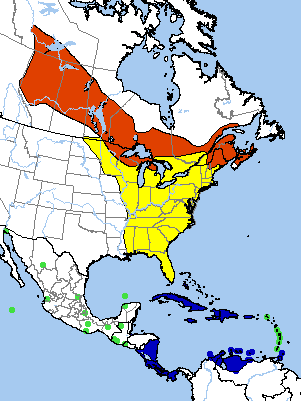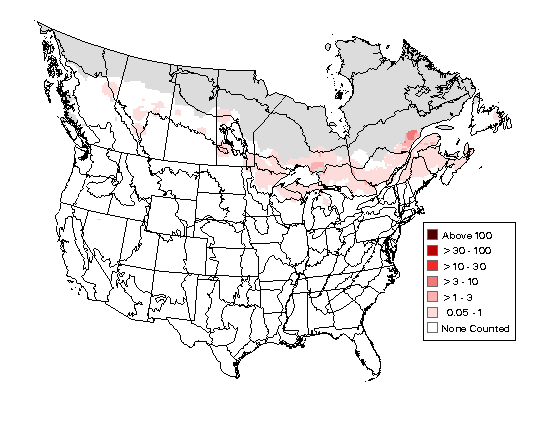Birdfinding.info ⇒ Common during its peak migration periods in the eastern U.S.: e.g., it becomes very common in Florida during April and October, and at Great Lakes migration hotspots such as Magee Marsh (Ohio) and Point Pelee National Park (Ontario) in May. On its Canadian breeding grounds, it can be found in and around dense stands of mature spruce, a preference that it has evidently evolved to take advantage of Spruce Budworm infestations as the mainstay for feeding its young.
Cape May Warbler
Setophaga tigrina
Breeds in the boreal forest zone of North America. Winters on Caribbean islands and coasts.
Breeding. Coniferous and mixed forests from the southeastern Yukon to Nova Scotia, south to northern Wisconsin, Michigan, and Maine. Peak nesting densities appear to be in Ontario and Quebec.
Nonbreeding. Winters in all types of woodlands, mainly in the Greater Antilles, but also regularly in smaller numbers in southern Florida, the Bahamas, the Virgin and Leeward Islands, and along the mainland coast from the Yucatán Peninsula to Panama. Stragglers appear in winter anywhere from southern Mexico to Trinidad.
Movements. Most migrants funnel through Florida, both northbound and southbound. Rare in spring and fall west of the Mississippi Valley. A regular vagrant, mainly in fall, throughout the western U.S., detected most often in California.
Identification
Breeding male is distinctive and striking, with bright yellow underparts, face, and partial collar, rufous cheek patch, borad white shoulder-level wingbar, and heavy black streaks on the breast and flanks.
The upperparts are mostly olive with black streaks on the back that vary from subtle to predominant. The rump shades from olive to yellow—also variable in extent and brightness.

Cape May Warbler, male in breeding plumage, with extremely heavy streaking on the breast. (Magee Marsh, Ohio; May 13, 2016.) © Adam Jackson
The characteristic rufous cheek patch varies widely in extent, sometimes covering most or all of its otherwise-yellow eyebrow. Individuals with more extensive rufous on the face often have a rufous throat patch, and sometimes a rufous crown patch as well.
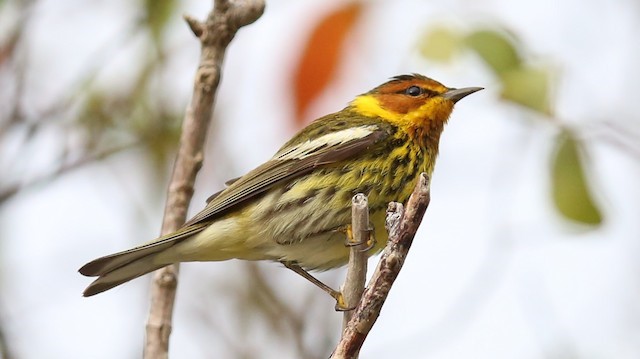
Cape May Warbler, male in breeding plumage, with extensive rufous on face and throat. (Key Largo Hammocks State Botanical Site, Florida; April 25, 2017.) Anonymous eBirder
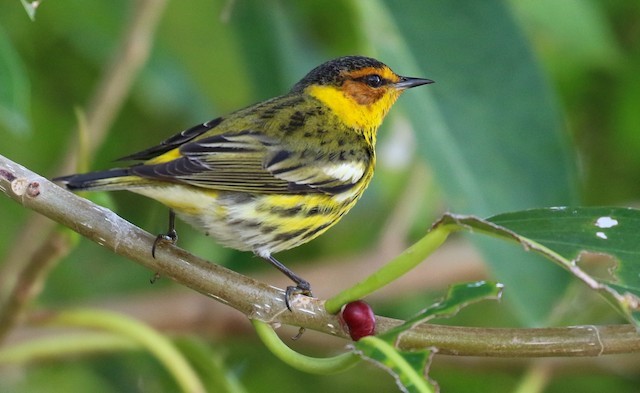
Cape May Warbler, male in breeding plumage. (Sunrise Cay, Key Largo, Florida; April 22, 2018.) © Harold Brewer
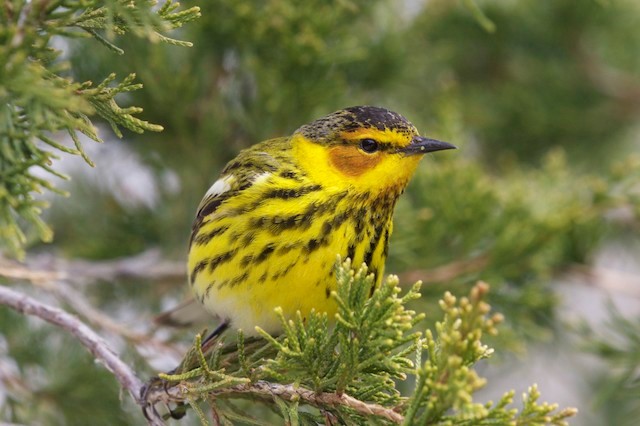
Cape May Warbler, male in breeding plumage. (Point Pelee National Park, Ontario; May 11, 2016.) © Michelle Martin
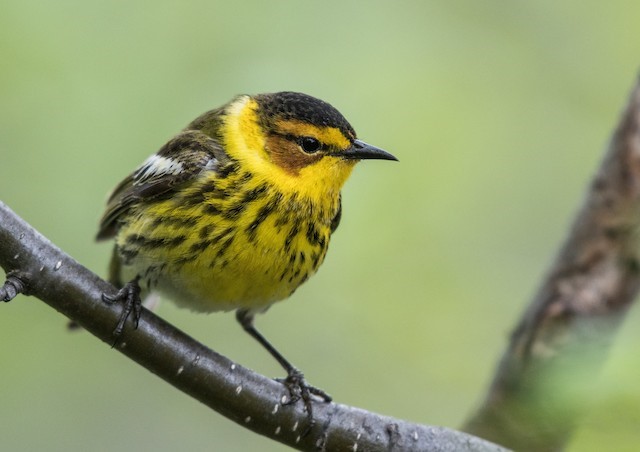
Cape May Warbler, male in breeding plumage with dull brown cheek patch—and showing the breadth of its yellow partial collar. (Saguenay, Quebec; May 29, 2017.) © Simon Boivin
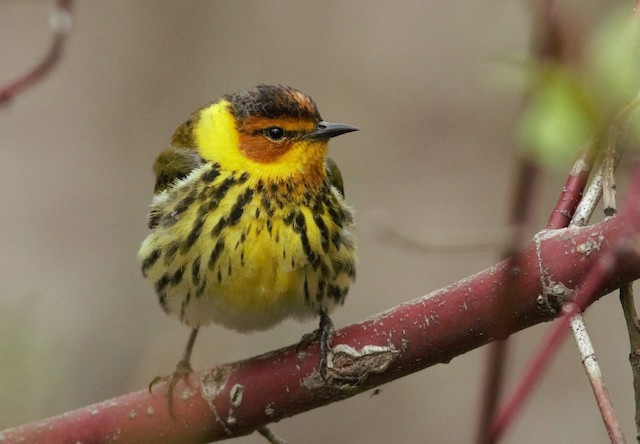
Cape May Warbler, male in breeding plumage, with mostly rufous face (including entire eyebrow) and crown patch—and showing the breadth of its yellow partial collar. (Tommy Thompson Park, Toronto, Ontario; May 14, 2016.) © Ruth Danella
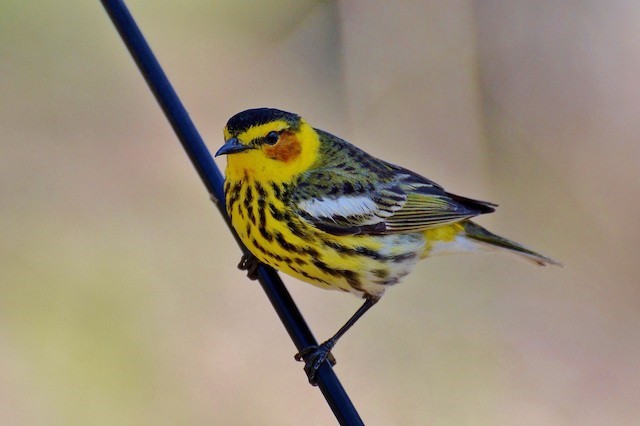
Cape May Warbler, male in breeding plumage, with small rufous cheek patch and yellow throat. (Cottage Grove, Minnesota; May 10, 2013.) © Peter Nichols
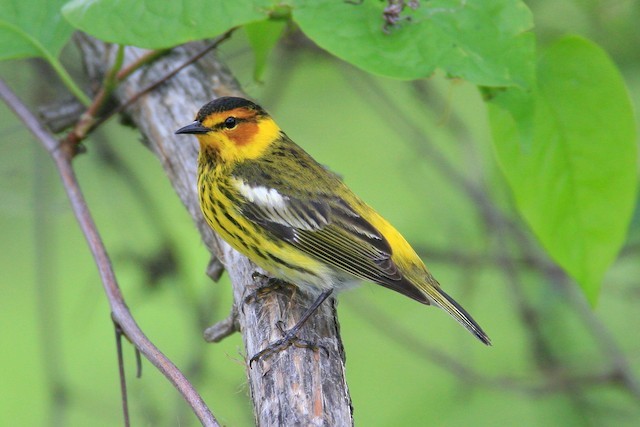
Cape May Warbler, male in breeding plumage, showing extensively yellow rump. (Mallard Lake, Manila, Arkansas; May 14, 2008.) © Timothy Jones
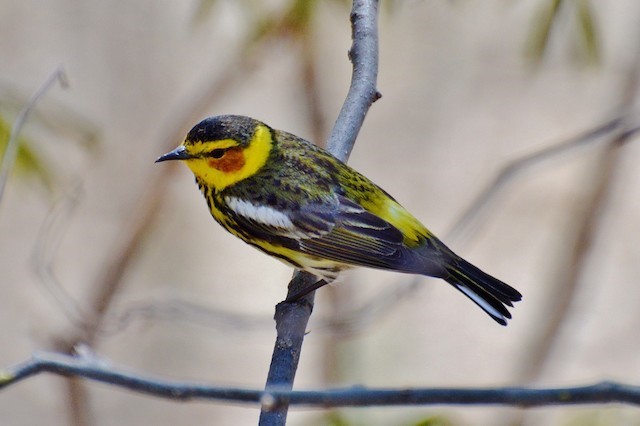
Cape May Warbler, male in breeding plumage, with small rufous cheek patch, showing modestly yellow rump and heavy streaks on the back. (Cottage Grove, Minnesota; May 10, 2013.) © Peter Nichols
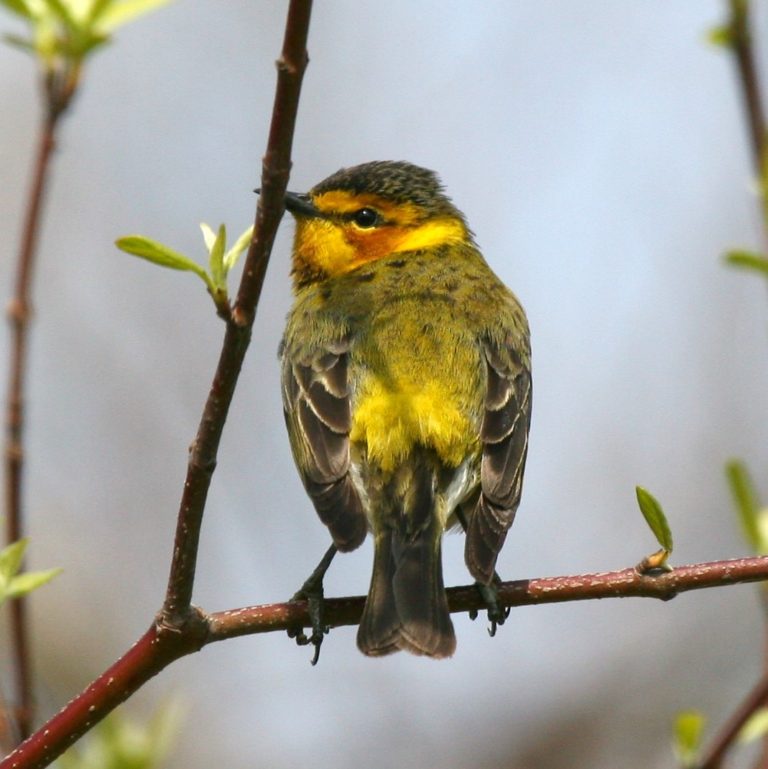
Cape May Warbler, male in breeding plumage, showing modestly yellow rump and minimal streaking on the back. (May 9, 2007.) © Dominic Sherony
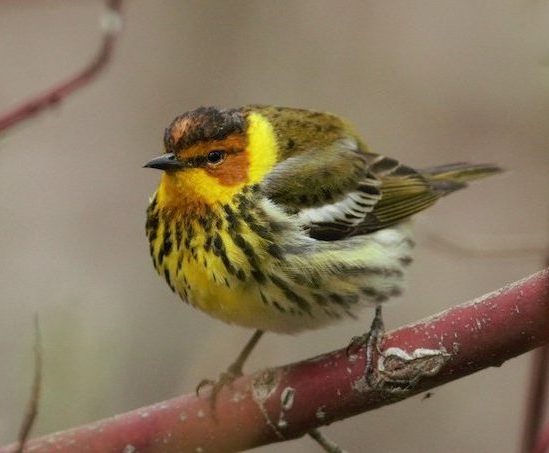
Cape May Warbler, male in breeding plumage, with mostly rufous face (including entire eyebrow) and crown patch—and showing the breadth of its yellow partial collar. (Tommy Thompson Park, Toronto, Ontario; May 14, 2016.) © Ruth Danella
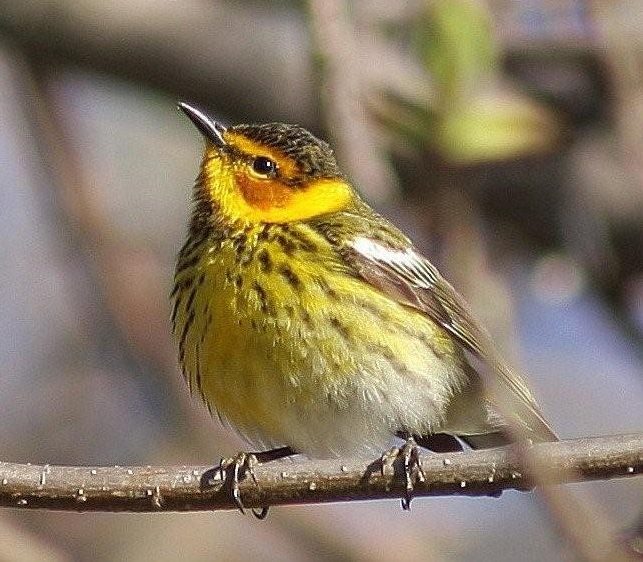
Cape May Warbler, male in breeding plumage, with faint streaking on the breast. (Cap Tourmente National Wildlife Area, Quebec; May 20, 2008.) © Guy Poisson
Females and nonbreeding males show variably muted or washed-out versions of the breeding male plumage, with the olive and rufous coloration largely replaced by gray.
There is a phenomenally wide spectrum of plumages that includes many variations. Many are atypical and can be difficult to identify.
Females are usually less colorful than immature males—but there is some overlap. They generally show two narrow wingbars and an olive (not yellow) rump.
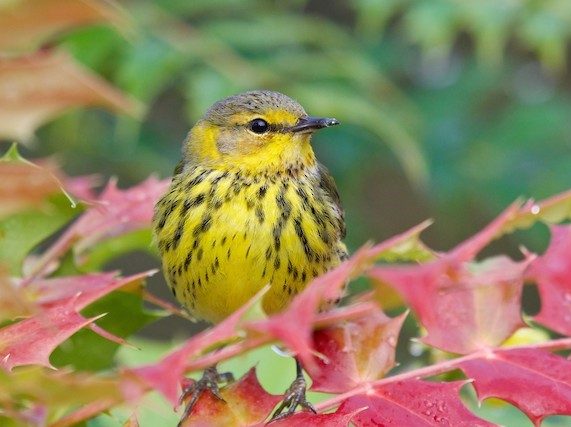
Cape May Warbler, male in fall plumage. (Abbotsford, British Columbia; January 23, 2019.) © Jerry McFetridge
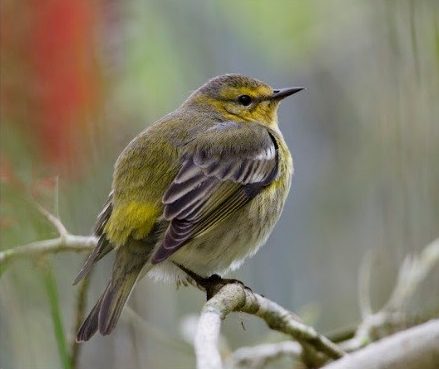
Cape May Warbler, female—or possibly a young male—note the extensive white in the wings lacking a clearly male or female pattern. (Topes de Collante National Park, Cuba; February 18, 2015.) © Joshua D. Vandermeulen

Cape May Warbler, female—a mostly gray individual showing very limited orange in the face. (Magee Marsh, Ohio; May 16, 2018.) © Fred Roe

Cape May Warbler, female—a mostly olive individual showing extremely limited orange in the face—note the white tail-spots, finely streaked crown, and broad grayish collar. (Tadoussac Bird Observatory, Quebec; May 28, 2018.) © Ian Davies
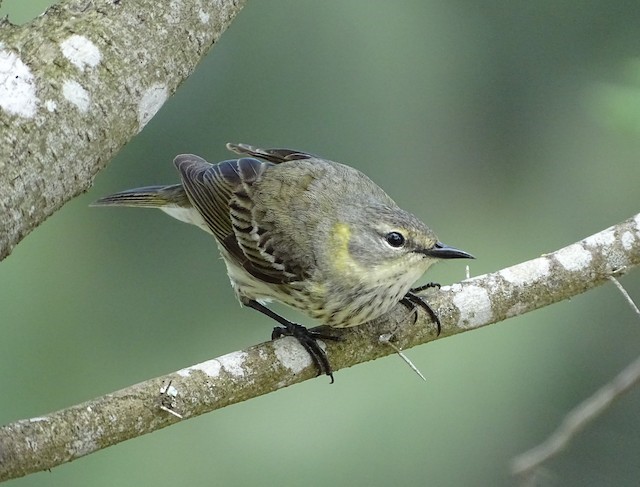
Cape May Warbler, female—a mostly gray individual showing only a tiny amount of yellow in the face. (South Padre Island, Texas; April 26, 2018.) © Jim Sweeney

Cape May Warbler, immature male—note the broad, shoulder-level wingbar. (Hartswell, Exuma, Bahamas; October 21, 2018.) © Lorraine Minns
Immature females are easily confused with several other dull “fall warblers.” They are mostly grayish-olive above, with indistinct wingbars, and pale below, with diffuse streaks on the breast.
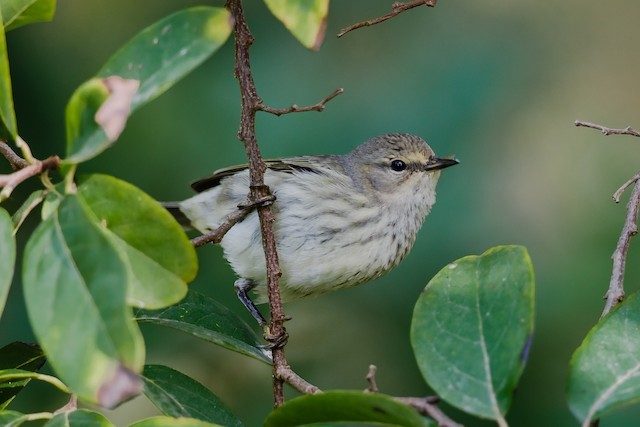
Cape May Warbler, immature female. (George Town, Exuma, Bahamas; October 12, 2016.) © Lorraine Minns

Cape May Warbler, immature female. (Texas Hollow State Forest, Burdett, New York; September 27, 2015.) © Ian Davies
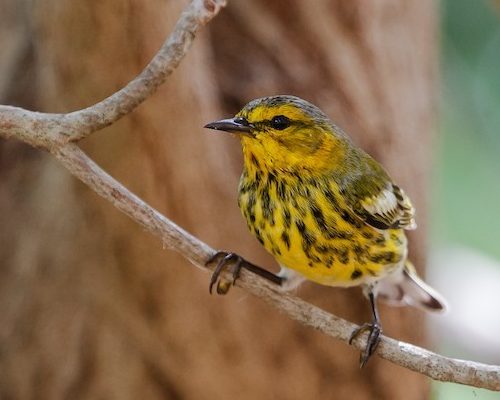
Cape May Warbler, male in fall plumage. (George Town, Exuma, Bahamas; October 12, 2016.) © Lorraine Minns
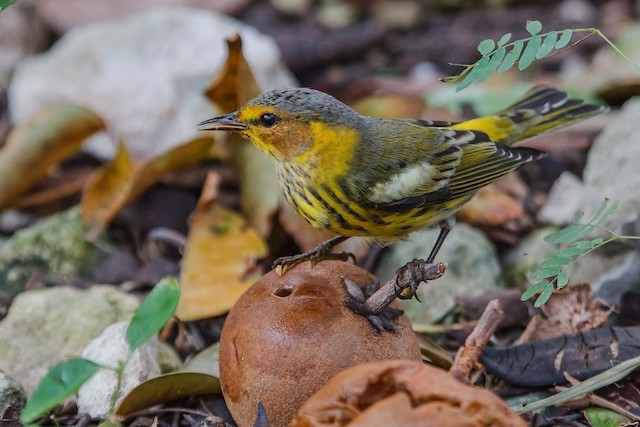
Cape May Warbler, male in fall plumage. (George Town, Exuma, Bahamas; October 12, 2016.) © Lorraine Minns
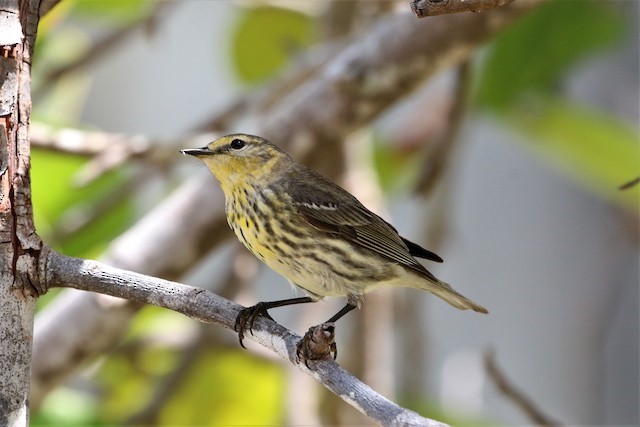
Cape May Warbler, female with unusually heavy streaking on the breast and flanks. (Fort Zachary Taylor Historic State Park, Key West, Florida; May 5, 2018.) © Richard Jeffers

Cape May Warbler, female. (Monhegan Island, Maine; May 24, 2018.) © Luke Seitz

Cape May Warbler, female—or possibly a young male. (Monhegan Island, Maine; October 3, 2018.) © Jeremiah Trimble
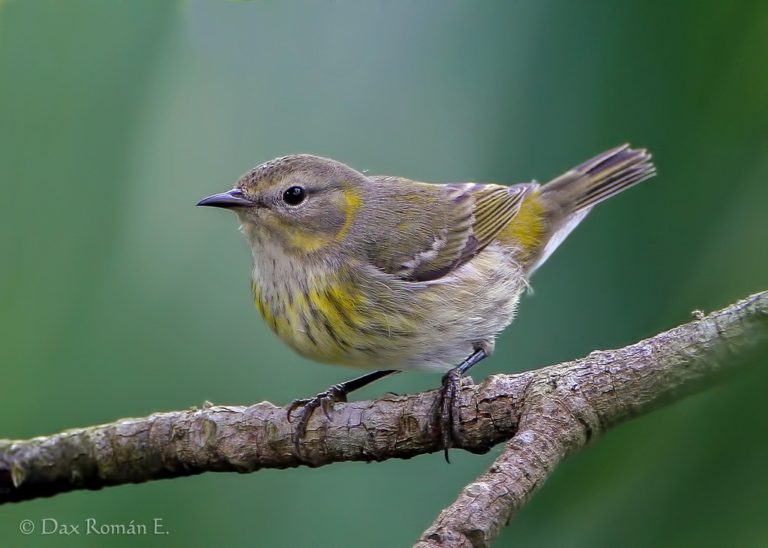
Cape May Warbler, female. (Medina, Dominican Republic; November 9, 2013.) © Dax M. Román E.
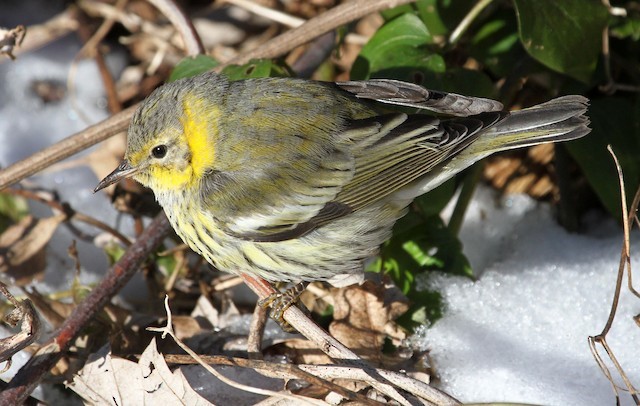
Cape May Warbler, apparently a female in fall plumage—the wingbar is broad like a male’s, but its location on the wing coverts is wrong for a male. (Baltimore, Maryland; January 10, 2015.) © Steve Collins
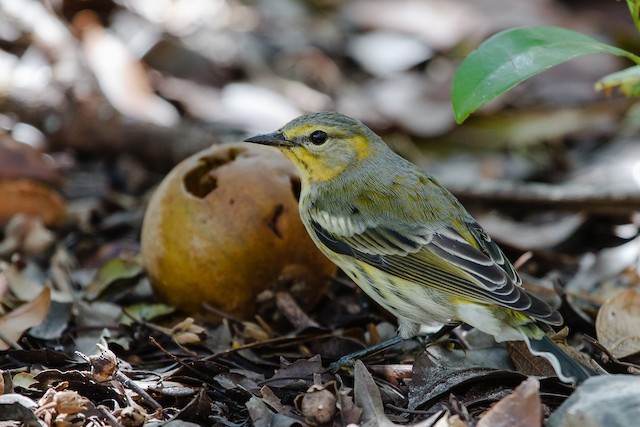
Cape May Warbler, immature male. (George Town, Exuma, Bahamas; October 12, 2016.) © Lorraine Minns
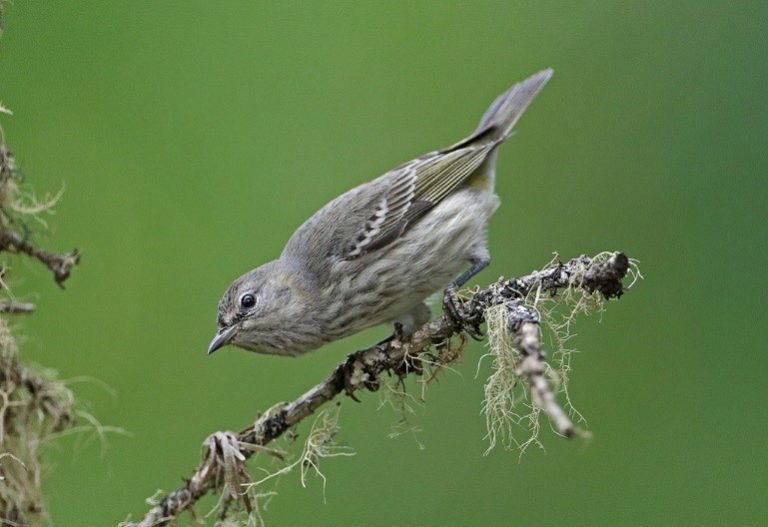
Cape May Warbler, immature female. (National Botanical Garden, Santo Domingo, Dominican Republic; November 14, 2015.) © Dax M. Román E.

Cape May Warbler, immature female. (National Botanical Garden, Santo Domingo, Dominican Republic; December 10, 2013.) © Dax M. Román E.
Cf. Other Female Warblers. Juvenile and first-spring female Cape Mays resemble several other warbler species in their plainest juvenile and non-breeding female plumages, especially “Myrtle,” Palm, Pine, and Blackpoll Warblers. Among this group, Cape Mays generally show more pronounced streaks over a larger portion of the breast.
Notes
Monotypic species.
References
Alderfer, J., and J.L. Dunn. 2014. National Geographic Complete Birds of North America (Second Edition). National Geographic Society, Washington, D.C.
Ascanio, D., G.A. Rodriguez, and R. Restall. 2017. Birds of Venezuela. Christopher Helm, London.
Dunn, J.L., and K.L. Garrett. 1997. A Field Guide to Warblers of North America. Houghton Mifflin, Boston.
eBird. 2019. eBird: An online database of bird distribution and abundance. Cornell Lab of Ornithology, Ithaca, N.Y. http://www.ebird.org. (Accessed March 4, 2019.)
Fagan, J., and O. Komar. 2016. Peterson Field Guide to the Birds of Northern Central America. Houghton Mifflin Harcourt, New York.
Garrido, O.H, and A. Kirkconnell. 2000. Field Guide to the Birds of Cuba. Cornell University Press, Ithaca, N.Y.
Garrigues, R., and R. Dean. 2014. The Birds of Costa Rica: A Field Guide (Second Edition). Cornell University Press, Ithaca, N.Y.
Haynes-Sutton, A., A. Downer, R. Sutton, and Y.-J. Rey-Millet. 2009. A Photographic Guide to the Birds of Jamaica. Princeton University Press, Princeton, N.J.
Howell, S.N.G., and S. Webb. 1995. A Guide to the Birds of Mexico and Northern Central America. Oxford University Press, Oxford.
Latta, S., C. Rimmer, A. Keith, J. Wiley, H. Raffaele, K. McFarland, and E. Fernandez. 2006. Birds of the Dominican Republic and Haiti. Princeton University Press, Princeton, N.J.
Raffaele, H. 1989. A Guide to the Birds of Puerto Rico and the Virgin Islands. Princeton University Press, Princeton, N.J.
Raffaele, H., J. Wiley, O. Garrido, A. Keith, and J. Raffaele. 1998. A Guide to the Birds of the West Indies. Princeton University Press, Princeton, N.J.
Ridgely, R.S., and J.A. Gwynne. 1989. A Guide to the Birds of Panama (Second Edition). Princeton University Press, Princeton, N.J.
Salt, W.R., and J.R. Salt. 1976. The Birds of Alberta. Hurtig Publishers, Edmonton, Alberta.
Wells, J.V., and A.C. Wells. 2017. Birds of Aruba, Bonaire, and Curaçao. Cornell University Press, Ithaca, N.Y.

